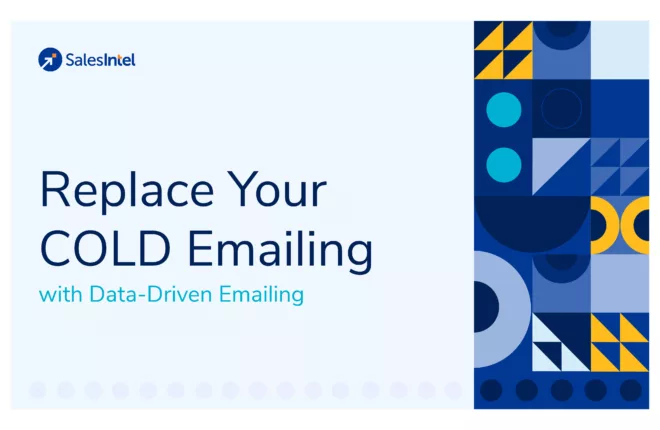The SaaS industry has suffered in 2020. According to the Software as a service (SaaS) Global Marketing Report, the SaaS industry has seen a low growth from 2019 to 2020 at a compound annual growth rate (CAGR) of 1%. The low growth is primarily due to a global economic slowdown caused by the COVID-19 outbreak and the actions taken to control it. However, from 2021, the market is predicted to recover and increase at a CAGR of 10%, reaching $253 billion in 2023.
The primary focus of SaaS companies has ultimately shifted to growth. And here’s where growth hacking takes center stage. But, what exactly is growth hacking, and what are some of the best growth hacking strategies that SaaS companies can implement? Let’s take a look.
What is Growth Hacking
Growth hacking is a catch-all term for strategies that focus completely on growth. The word “hacking” here refers to finding creative ways to market that bring big results. It is most commonly used by early-stage enterprises that require rapid expansion on a limited budget. However, (almost) every business is in the recovery stage and trying to boost its journey to growth. As a result, growth hacking becomes crucial for every business – whether startups or large enterprises.
Growth hacking frequently generates big returns with modest investments. Companies like Dollar Shave Club, Dropbox, and LinkedIn have benefited from it to gain millions of consumers and dollars.
Growth hacking focuses on generating new customers and scaling their enterprises over anything else to spike the growth curve. They create, implement, and test their ideas to see if they are effective.
So, what are the parameters that growth hackers should track?
What Metrics Drive Growth Hacking
Each metric connects to a level of the growth hacking funnel to easily measure and track the progress.
- New Clients: Getting new clients is what acquisition is all about. This includes tracking website signups, funnel drop-off points, and more.
- Active Users: It is a process of persuading clients to keep using your product and providing them with a positive first experience. Focus is on registrations, feature usage, and registrations, among other things.
- Customer Retention: Keep customers coming back for repeat business. Monitor software usage, feature usage, and engagement with new updates, etc.
- Revenue Generated: Note the number of paying users, the free-to-paid user ratio, the number of initial transactions, upsell opportunities, monthly churn rate, and more.
- Referrals: Encourage clients to refer new consumers to you through referrals. Tracked based on consumer happiness, social media shares, and other metrics.
As there are several metrics for each stage of the funnel, it becomes easy to know what is working and how well their efforts are paying off.
1. Know Your Customers
Just as you need to understand the role your product plays in the market, you also need to understand your buyers and why they purchase. This knowledge helps you narrow down your prospective pool. You should take a fresh look at the data of your best clients rather than focusing on old profiles generated based on assumptions about your ideal client.
Create an ideal customer profile so that your marketing strategy can be tailored to certain personas.
These data points include:
- Industry: Do your top customers come from a specific industry or different industries?
- Company Size: Do your ideal customers come from similar-sized businesses?
Are your buyers or the decision-makers typically managers? Senior executives? C – Workers on the level? - Revenue: How much revenue do your customers usually generate each year? Is there a minimum standard that the best customers must meet?
- Technographic: What strategies are they now employing in terms of technology? Is it possible to use software or networks that operate with your products? Do they use a competitor’s product?
- Why They Buy: What motivates this person or company to purchase new products? Is there a certain event or combination of events that frequently signals their willingness to buy?
Analyze the common characteristics among your existing clientele. This will aid your efforts to create a highly targeted ideal customer profile. You can use a sales intelligence tool to access valuable data in one place.
Considering the ideal customer profiles will allow you to drive more engagement while implementing a sales and marketing strategy.
2. Build a Useful Freemium Tool
A SaaS company may use the term “freemium” to describe a marketing strategy in which it offers both free and paid versions of its product. Free tools are an excellent way to familiarize B2B buyers with your brand and products before asking them to purchase.
For instance, RevDriver by SalesIntel allows the users to find contact and company data from LinkedIn for free. The tool is valuable for the marketers and sales reps as it provides data of the prospects and it has both – free and paid versions.
Using a freemium tool, you are not only creating a potential client for your product but also letting them use it before they upgrade to a paid version.
3. Building a Highly-Focused Email List
The goal of building a B2B list is to create a highly dependable and focused lead list. You don’t want to waste weeks or even months emailing a lead just to discover that this person isn’t a good fit for your product, or worse, that they have left the company.
87% of B2B companies use email marketing as it is an incredibly low-cost, low-effort, and higher return solution. It may take some time to build the list when you are taking a do-it-yourself (DIY) approach. DIY takes time and is less accurate as the data you are collecting might be outdated or include guesswork.
SalesIntel takes all the guesswork out of the B2B list building. It allows you to access millions of human-verified data across different industries in a few clicks. It helps grow your outreach in less time.
4. Make a Network of Referrals
Referrals play a vital role in growth hack strategy. Consider the following statistics:
- A new referral customer’s lifetime value is 16 percent higher than non-referrals.
- When a friend refers you, you’re four times more likely to buy.
When compared to the rest, companies with organized referral programs saw an 86 percent increase in income over the last two years.
If that isn’t enough to pique your interest, keep in mind that recommendations are a low-cost marketing technique that can have a significant impact on your business.
Dropbox is a well-known document-sharing software that has used a strong referral scheme. The program paid off handsomely. Rather than merely asking for recommendations, they offered both parties additional free storage as an incentive. This growth hack strategy went viral, resulting in the company’s rapid expansion.
5. Focus On Your Product Integration With Other Platforms
B2B product integrations are effective in streamlining the user experience and enriching the products customers already use. You can make it easier for your audience to see the benefits of your product through integration.
For instance, say you’ve created a review management system. Your user would like to link the reviews to an email marketing app so that they may collect reviews more quickly. Integrating your product with email software is then an effective strategy to increase your app’s user experience.
6. Targeting Competitor Keywords with PPC
Pay-per-click marketing campaigns help you build a large customer base. PPC can benefit small SaaS businesses in a variety of ways, and like any other digital marketing technique, tend to generate revenue faster.
You can use Google Ads and social media ads to advertise your product or service, and you only pay the service provider when someone clicks on your ad. The following are some of the benefits of PPC:
- Results that are quick and quantitative.
- Enhances brand awareness.
- Customers in the area can get in touch with you quickly.
- Cost-effective for you.
- Sending correct messages to the right people at the right time.
Make a list of your competitors and bid on their keywords. If businesses are looking for your competitor’s product, that means they will also look for alternatives. So, you are making sure that you are reaching your potential customers.
7. Use Visitor Identification Tool To Stop Opportunity Leakage
The vast majority of visitors to your website vanish into thin air.
According to Marketo, 96% of website visitors will not contact you. Take a look at Marketo’s website visitor statistics. Marketers usually concentrate on the 4% of visitors who opt-in or register on their website. It takes a lot of effort and money to get that number up to 5 or 6%. However, teams are overlooking the other 96% of visitors who have the potential to become customers.
Marketing and sales teams will become more productive if they can acquire insight into the people who are already visiting your site because then they can figure out where to focus their efforts and stop the leakage.
You can use tools like VisitorIntel that unmasks the company visitors for you as well as provide firmographic, technographic, and intent data for each of them.
Make Sure You Hit the Dart Board
Focusing on growth-oriented marketing methods will allow you to constantly reach new audiences and attract, acquire, and convert them into users. However, while doing so you need to make sure that you are hitting on the dartboard. That means being intentional about targeting the right audience for your product. You don’t want to throw spaghetti everywhere on the wall hoping that some will stick.
Make sure you have the required data (the darts) to hit your growth hacking goals (the dartboard). SalesIntel can help you with a simplified data platform so that you can focus on building growth hack strategy, generating revenue, and bringing in exponential growth.





